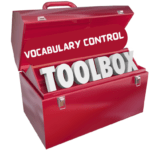Newsclipping is the process of cutting out selected important news items, such as articles, post-editorials, editorials, etc., published in periodicals, particularly weekly newspapers, and organizing them according to the subject so they can be read immediately or found out immediately without time whenever required. This is done mainly in newspaper libraries and public libraries. These are very valuable, particularly to journalists and writers who want to write articles, reports, commentaries, etc. on a current topic in particular and historical subjects in general.

The process of organization can be demonstrated through the following steps:

Now some of the above steps can be explained for the convenience of the readers:
- Selecting and marketing: The important, useful, or frequently required item is generally selected by a news editor or even an information scientist by giving a mark with red ink.
- Mentioning date &source: The date and source (title of the periodical in which the item has been published) are given through a pre-set date machine, and rubber stamps of the specific periodicals. In the case of a journal, magazine, or article, the name of the writer, journal title, volume, and year will also have to be mentioned.
- Cutting: The items are then cut either by a cutter, knife, scissors, or blade by an assistant or clerk.
- Pasting or mounting of the items is done on separate A4-sized paper to ensure that the items are not lost. In some libraries, this is not done since; in that case, the files become too balky in a short time to be kept on the shelf.
- Filing: Because each item is on some particular subject, the clippings are preserved in subject files. A list of subject headings is prepared and developed based on the requirements of journalists, writers, and users.
- Shelving: The files are shelved either in a steel Almeria or open shelf or preserved in a vertical file cabinet. It is generally easy to use from the Almira or open shelf, but a bit difficult to find a particular file from the vertical file cabinet.
- Old files to send to store: Because the items on current popular topics, in particular, increase in size and become quite bulky in a few months,. A time is thus determined, i.e., either 5 months or a year to keep them on library shares, after which they will be required to be sent to storage. Care should also be taken to ensure that the files in storage are not destroyed and that they can be called back.
Further Steps:
Apart from the above steps, some more explanation may be useful to readers as to how these processes could be achieved:
- List of subject headings: A list of subject headings with classification numbers (DDC+ some local additions) or serial file numbers against each subject has to be maintained. Subject headings may be drawn from LC and Sears lists, and many headings may have to be self-coined.
- Files: A general ordinary file or laminated file with subject headings +file number or classification number written on it and shelved in a steel almirah can be more convenient for handling than maintaining a vertical file cabinet.

Online retrieval system on Newsclipping:
To create an online news clipping retrieval system, you need to:
- Define requirements
- Choose a tech stack
- Gather clippings
- Store them in a database
- Implement indexing for efficient searching
- Design a user-friendly interface
- Incorporate authentication and authorization
- Thoroughly test the system
- Deploy it to a web server using cloud hosting
- Maintain and update it regularly.
News articles and other media content from multiple sources can be searched for, retrieved, and managed by users using an online news clipping retrieval system. An online news clipping retrieval system allows users to search, retrieve, and manage news articles and other media content from various sources. Companies, scholars, writers, and public relations specialists frequently use these systems to keep tabs on media attention, follow trends, and obtain data.
Here are some key features and components of an online news clipping retrieval system:
1. Search Functionality
Users may quickly find news articles using keyword searches and sophisticated filters like date range, source, author, and category when utilizing the search feature of an online news clipping retrieval system. Because of this feature, users can quickly locate relevant content in large databases by enabling precise and targeted information retrieval.
2. Data Sources
A wide variety of media, such as popular news websites, social media platforms, blogs, online forums, and corporate press releases, can be used as data sources for an online news clipping retrieval system. This variety guarantees thorough coverage and the capacity to record diverse viewpoints and new trends from a range of content kinds.
3. Content Management
An online news clipping retrieval system’s content management tools let users tag, categorize, and annotate articles in order to clip, save, and arrange them for later use. These tools improve the accessibility and usability of the data gathered, which makes it simpler for users to effectively manage and retrieve pertinent content.
4. Alerts and Notifications
An online news clipping retrieval system’s alerts and notifications feature notifies users when new articles that match their search parameters are published by means of email alerts and real-time notifications. This keeps users informed about recent advancements and pertinent news without requiring them to continuously check the system.
5. Analytics and Reporting
An online news clipping retrieval system’s analytics and reporting features offer sentiment analysis, personalized reports based on gathered data, and insights into trends. With the aid of these tools, users can examine and comprehend media coverage, spot trends in the news, and draw useful conclusions from the information that has been retrieved.
6. User Interface and Experience
An online news clipping retrieval system’s dashboard makes it simple to access saved clippings, searches, and settings. Its user interface and experience are made to be intuitive and customizable. In order to ensure that users can effectively navigate and interact with the system’s features, it attempts to provide a seamless browsing and management experience.
7. Integration and Export
An online news clipping retrieval system’s integration and export features enable smooth API integration with other tools and platforms, promoting data interchange and workflow integration. Additionally, users have the option to export the retrieved content in a number of formats, including Excel, CSV, and PDF, for sharing and additional analysis.
8. Security and Privacy
Data encryption, secure storage, and access controls are just a few of the features that online news clipping retrieval systems use to protect user data. These security measures are put in place to uphold the availability, confidentiality, and integrity of the data that is gathered while complying with user trust standards and privacy laws.



